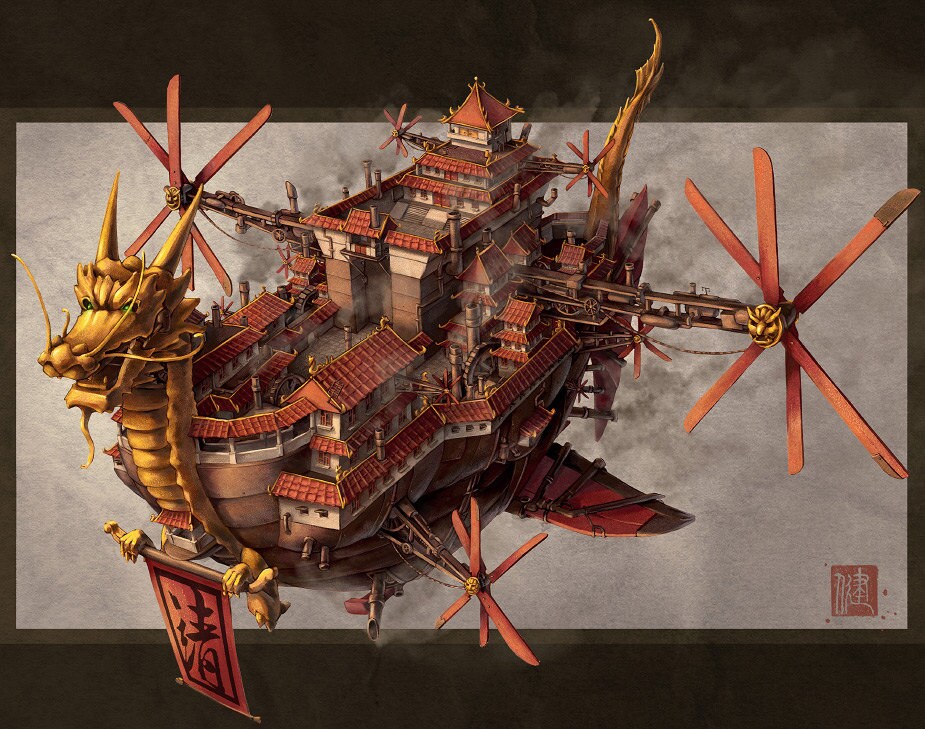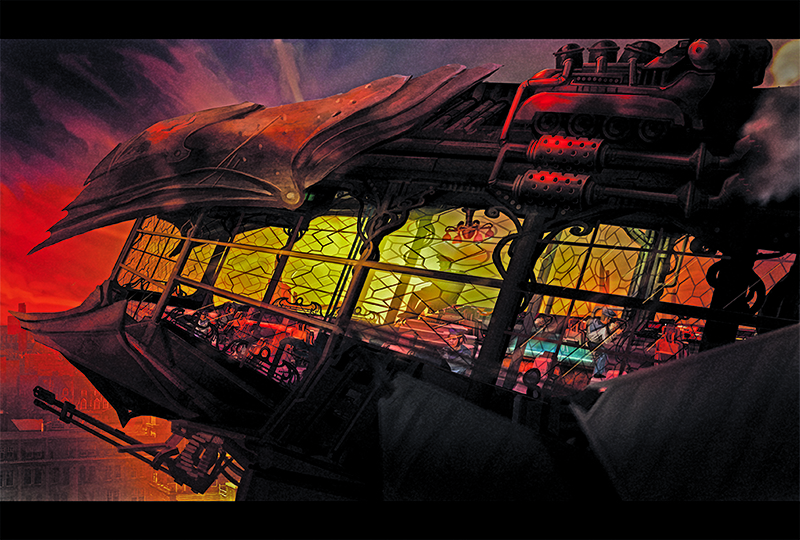In my first Genre Hell post, I gave a quick definition of what I think Steampunk is, but after doing a much more in-depth post on Dieselpunk, I figured I should probably go back to my “home” genre and dig in a bit.
Steam Power is the foundation of Steampunk as a genre to me. As I said in my original post, this is the single largest factor that separates Steampunk from other genres. Steam remains King. Since I’m getting into the weeds a bit here, I’ll be more specific. In this context, steam does the “work,” whether that means pushing a piston or turning a high efficiency turbine. Here is where we dive right back into the alligator infested genre swamp. A modern nuclear powerplant creates power by generating steam that turns turbines. Is that Steampunk? No, it’s set in a modern context. But we stick a nuclear reactor into the Nautilus and have Captain Nemo go tearing around the oceans of the 1850s ripping the keels out of ships… Bingo! We have Steampunk. Context is critical in all conversations about genre as far as I’m concerned.
And onto the next messy part of Steampunk. (There are many)
Aesthetic – Moreso than any of the other genres, Steampunk has become defined by the large community that grew out of its core concepts. Of course, even saying that means having to define what those “core concepts” are. Not to worry, I’ll do a bang-up job of misrepresenting what those are here in a minute. My confusion = your confusion, so grab a cocktail, ‘cause we’re going for a ride!
An “old school” definition of Steampunk could be ‘science fiction or fantasy placed into a pseudo Victorian context with mind bending gadgetry.’ The genre and its expressions have grown far beyond Victoriana, but we’ll get back to that later. We can also think of it as “punking” Victoriana. This image of Kit Stolen is a good example. It was one of the first “iconic” Steampunk images I ever saw. Going with this blend of punk and Victorian or similar styles, many of the underpinnings of what is now Steampunk can be seen as having come from within its own community. There are a lot of really cool people that wanted to make and wear cool things, and voila! Steampunk. Trying to separate this living community from the literary and other aspects would be missing the point by a wide mark in my opinion.
As I’ve said before, “Ask ten people involved in steampunk what Steampunk is, and you’ll likely get ten different answers.” This wide-open playing field is great for creativity, but lousy for trying to put a fence around. But here we go.
Steampunk has a more “genteel” sensibility than other genres – Nobody start shooting yet! I’m painting in broad strokes here. You don’t tend to see tea parties, men in frock coats and top hats, ladies in hoop skirts, and gentlemanly duels in most other genres. Sure, there are gritty stories, dirty hands and all that in Steampunk, but for the most part, the genre keeps its waistcoat on, even when it’s working. This civility is great storytelling fodder. It can be strained against, or something a character is striving to attain. I think it’s one of the many hearts of Steampunk as a genre.
Colonial/Imperial setting – If the world wars are a common setting in Dieselpunk, then stories with colonial and imperial powers as a backdrop are a similarly consistent setting in Steampunk. Most Steampunk includes some variety of class division, nobles, royalty or at least Imperial/Colonial governments. And for clarity, I’m lumping the wild west in as colonial expansion in this context. Nobility and royalty can easily be translated to land owners and cattle/rail barons.
Non-Victorian Steampunk – Many core Steampunk narratives are White European centric. The gentleman/lady explorer, the soldier, the wild west lawman, and so on. Really cool ideas for Steampunk have come into being because people wanted to do things that they felt represented by. Afro-Steampunk, Chinese Steampunk and numerous others have added their invaluable part to the multicultural continuum that is now Steampunk. And I cannot say loudly enough how utterly fantastic that is!
Where does all of this leave us? We have a genre that’s wide open with a few loose parameters that are sometimes cast off entirely in favor of better storytelling. But generally we’re going to see waistcoats, skirts and technology that failed spectacularly in the real world turned into hero tech. All with a thumping, whining heartbeat of steam driving it.
As I’ve said before, most things don’t fit neatly into a single genre box. Stories, books, movies and other narratives are usually combinations of elements. This is fiction after all. It’s as individual as the people writing/creating/participating in it.
Some references I give for Steampunk:
20,000 Leagues Under the Sea (1954)
Funeral beneath the Sea
The Time Machine (1960)
The City of Lost Children (1995)
Imperial Chinese Airship – James Ng


Great shaare